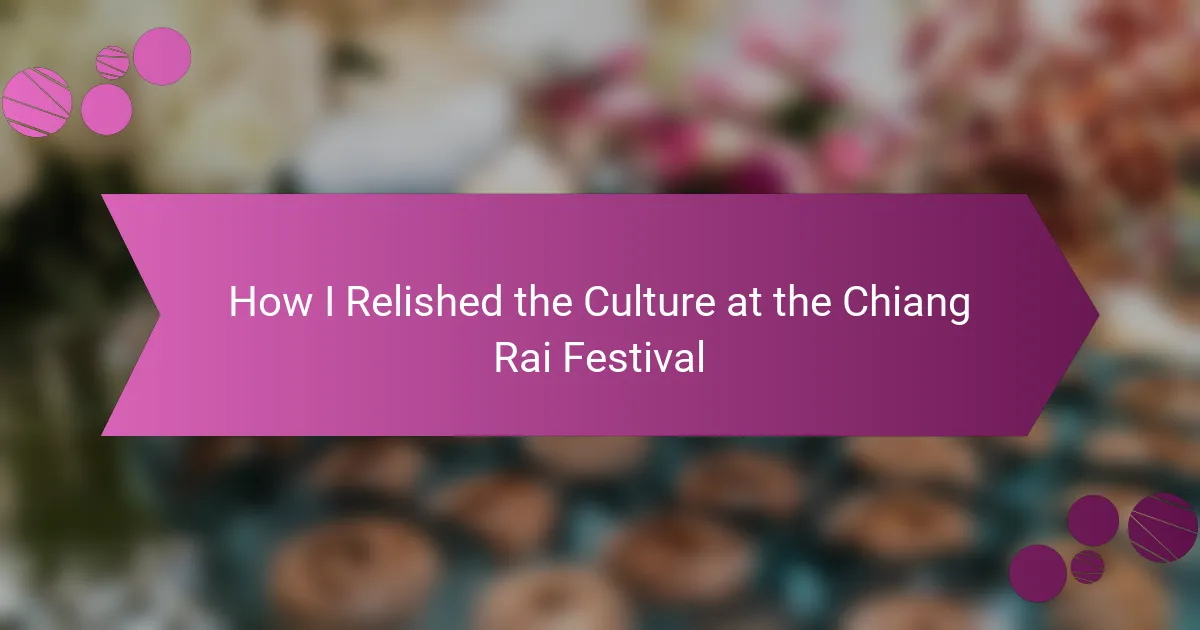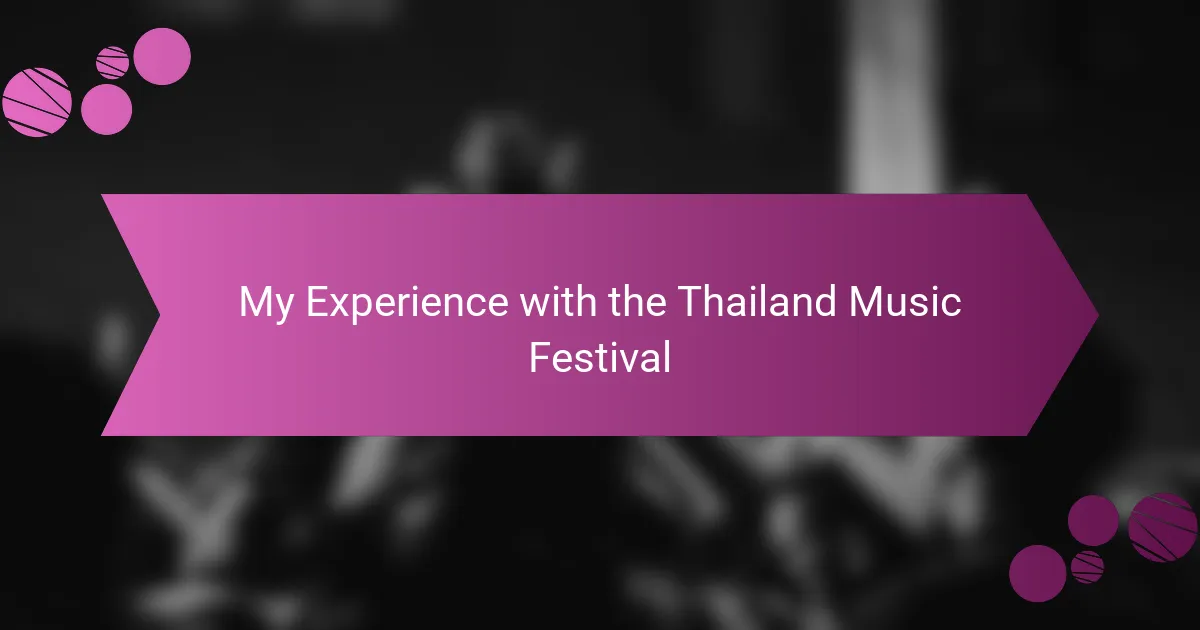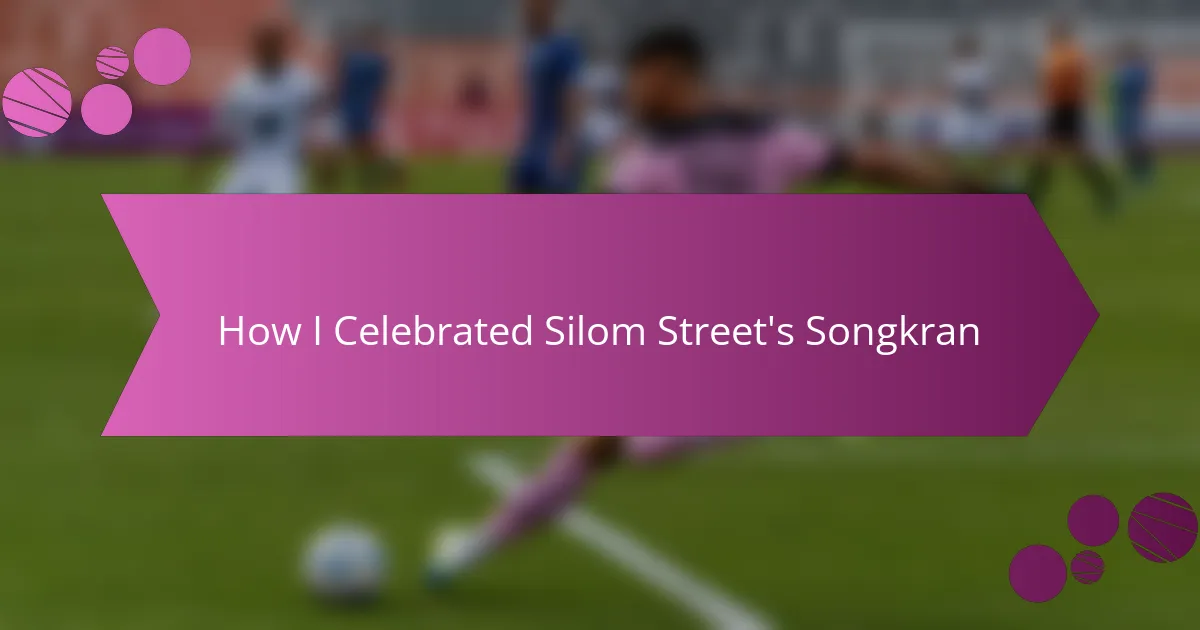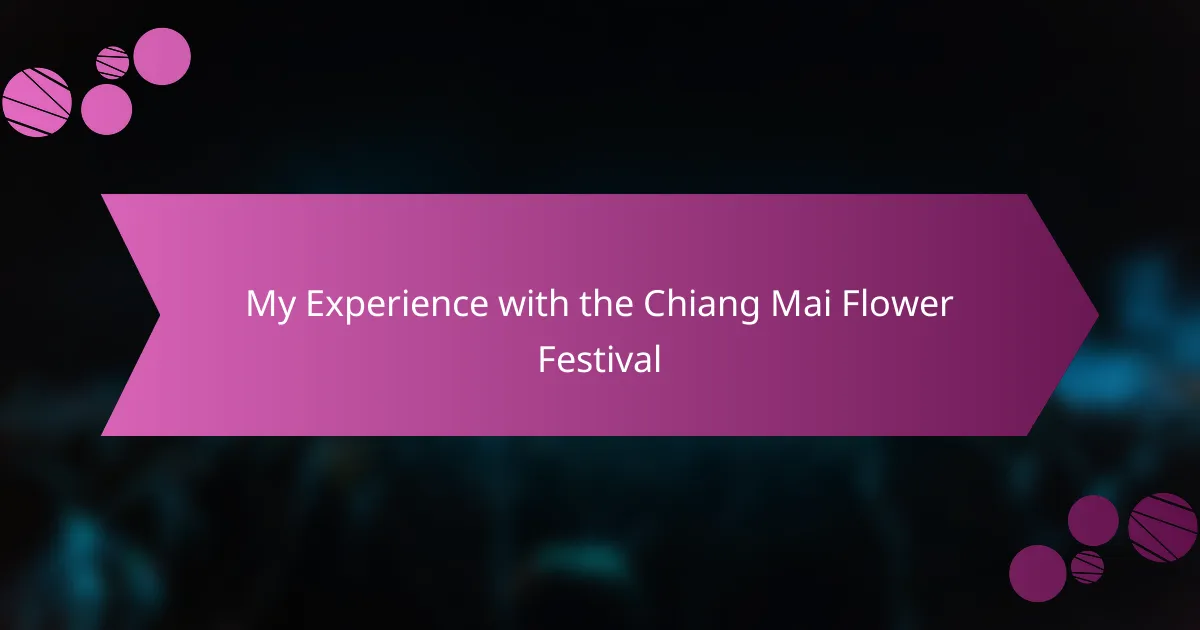Key takeaways
- Thai music festivals, such as the Chiang Rai Festival, celebrate cultural diversity through a blend of traditional and contemporary music, local artists, and community spirit.
- Live performances showcase unique traditional instruments, fostering a deep connection to Thailand’s cultural heritage and history.
- Personal experiences at the festival, such as local dances and culinary delights, enhance the appreciation of Thai culture and foster a sense of unity among attendees.
- Standout performances by local and contemporary artists reveal the emotional power of music, transcending language and creating shared experiences among diverse audiences.
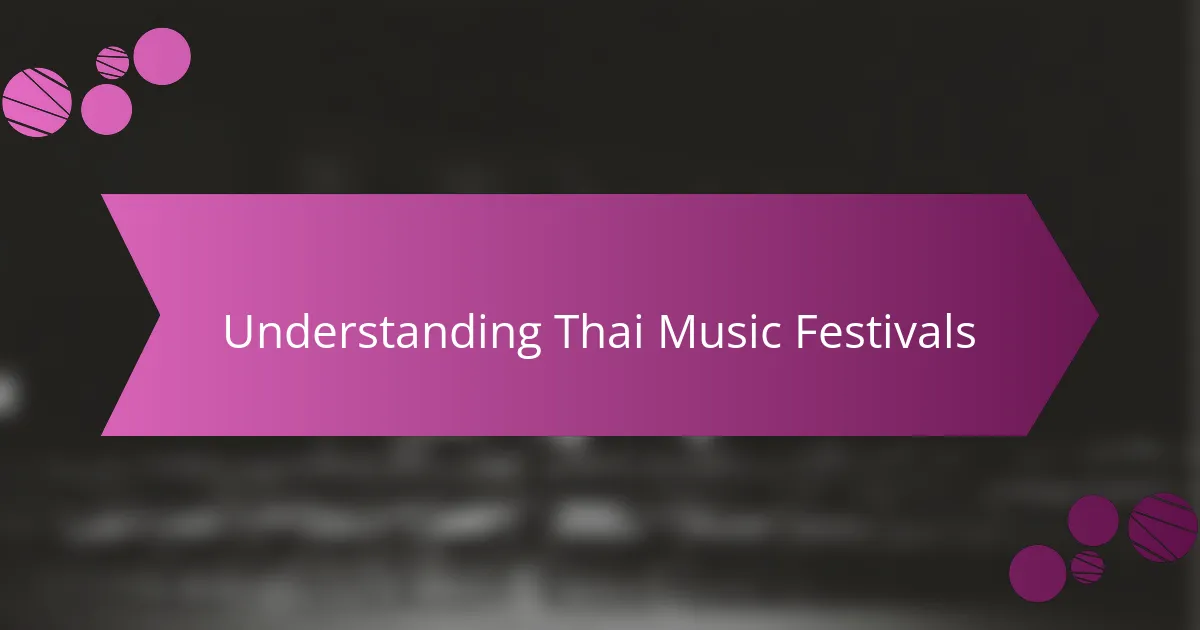
Understanding Thai Music Festivals
Thai music festivals are vibrant celebrations that blend traditional and contemporary sounds, showcasing the country’s rich cultural heritage. When I first experienced a festival, I was struck by the electric energy in the air. There’s something magical about being surrounded by locals and visitors alike, all swaying to the rhythm of live music, creating a sense of unity that felt almost tangible.
At the Chiang Rai Festival, I was particularly moved by the authenticity of the performances. Local artists, dressed in traditional attire, poured their hearts into their songs, reminding me of the importance of preserving cultural roots. The array of musical genres—from folk to modern pop—kept me engaged, and I found myself reflecting on how music can bridge cultural divides.
Here are some key aspects of Thai music festivals:
- Cultural Diversity: Reflects Thailand’s varied ethnic backgrounds and traditions.
- Live Performances: Showcases both local artists and international acts, enhancing the experience.
- Traditional Instruments: The unique sounds of traditional Thai instruments, like the khim and ranat, add depth.
- Food and Crafts: Local culinary delights and handmade crafts create a well-rounded cultural experience.
- Community Spirit: A strong sense of camaraderie among attendees enhances the joy of celebration.
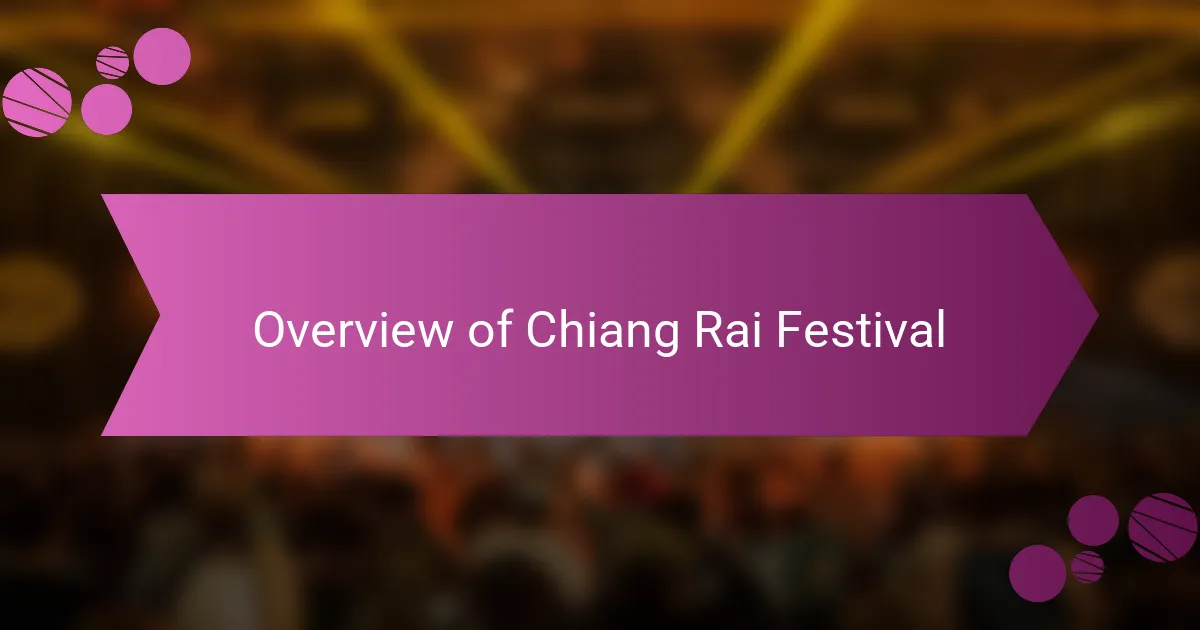
Overview of Chiang Rai Festival
The Chiang Rai Festival is a delightful blend of color, sound, and community spirit that captures the essence of Northern Thailand. When I first wandered through the festival grounds, I was enveloped by the fragrant aromas of street food mingling with the sounds of traditional music. It’s an immersive experience that truly showcases the heart of Chiang Rai’s culture.
One standout feature of the festival is its focus on local artists and their stories. I remember watching a group of musicians play traditional instruments, their passion radiating through the crowd. It made me ponder—how often do we get to witness the raw emotion behind art? It’s a rare privilege to experience the artistry that reflects centuries of history and the identity of the people.
As the sun set, the energy shifted, with lights illuminating the stage where performers captivated the audience. The array of performances—from soulful folk songs to energetic modern beats—created an atmosphere that felt electric. I found myself thinking about how such festivals not only entertain but also educate us about the vibrant cultures that shape our world.
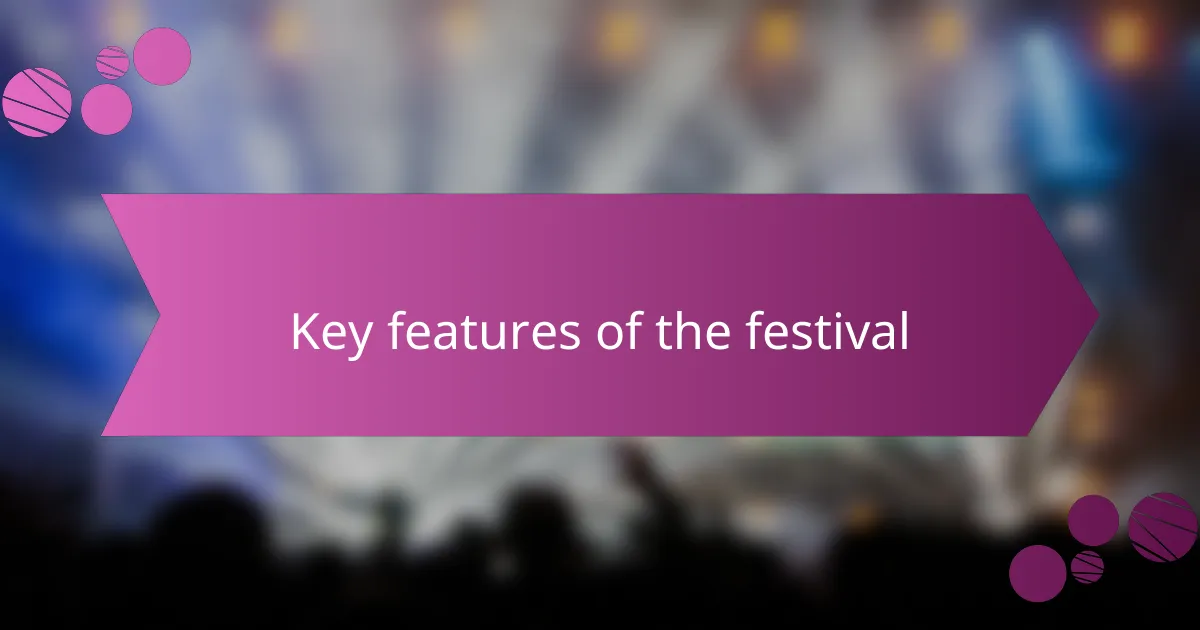
Key Features of the Festival
The Chiang Rai Festival shines brightly with its display of cultural diversity. I recall standing amidst a tapestry of performances that celebrated various ethnic backgrounds—from the northern hill tribes to the bustling city vibe of contemporary Thai music. Have you ever felt the pulse of a community through its art? It was here, in the mingling of voices and sounds, that I truly felt the heartbeat of Thailand.
Live performances are the heartbeat of this festival, showcasing both local and international talents. I was completely captivated by a duo who seamlessly blended traditional melodies with modern rhythms. It’s moments like these that make me appreciate the power of music to transcend borders and bring people together. Have you ever listened to a song that just transported you to another place? That’s exactly what happened to me during their set.
Traditional instruments truly create a unique soundscape that elevates the festival experience. Just take the khim’s melodic strums or the hypnotic beats of the ranat. The sound was intoxicating, and I remember closing my eyes, letting the music wash over me like a warm wave. Isn’t it remarkable how something as simple as a string or a drum can evoke such deep emotions? Each note reminded me how vital it is to embrace and celebrate our cultural heritage.
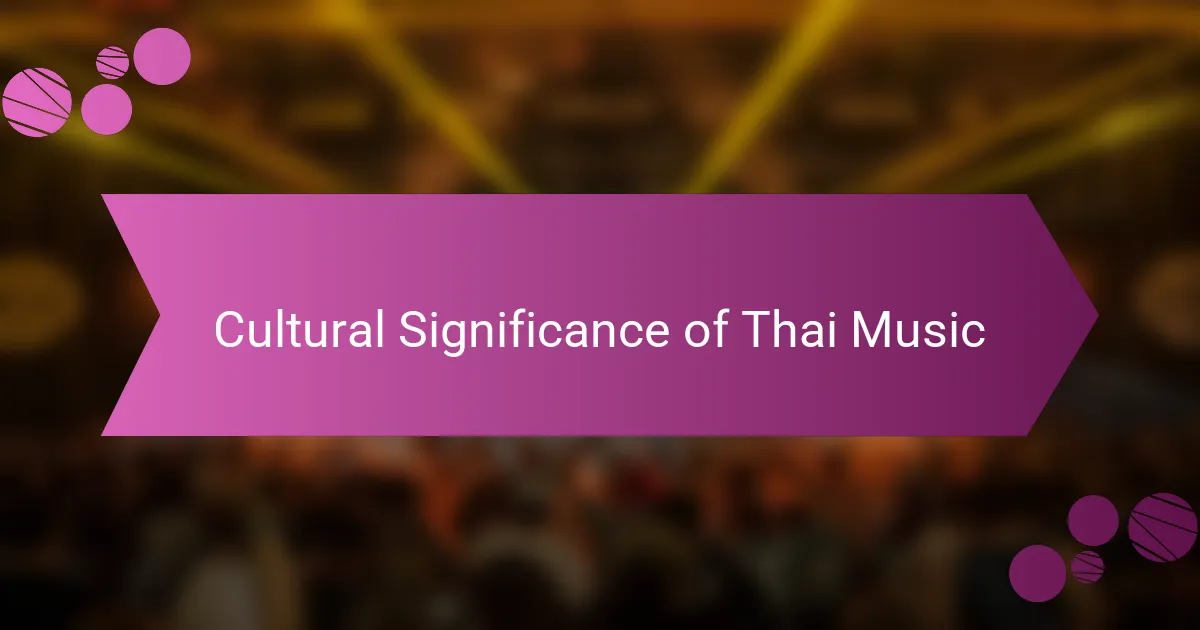
Cultural Significance of Thai Music
Thai music is not merely entertainment; it’s a profound reflection of the country’s rich culture and history. I remember attending a performance at the Chiang Rai Festival where the blend of traditional instruments like the khim and the ranat ek created an enchanting atmosphere. It made me feel deeply connected to the stories and emotions woven into each note, revealing the heart of the Thai spirit.
This cultural significance is often highlighted through various aspects:
- Heritage Preservation: Traditional Thai music preserves ancient stories, myths, and values that resonate through generations.
- Social Cohesion: Music brings people together, fostering community bonds and shared experiences during festivals and rituals.
- Cultural Identity: The unique sounds and styles of Thai music serve as a vital element of national pride, showcasing Thailand’s distinct identity.
- Spiritual Connection: Many forms of Thai music are intertwined with [censured], enhancing ceremonies and rituals that honor cultural beliefs.
- Artistic Expression: Musicians often express personal and collective emotions through their art, allowing listeners to experience a range of feelings.
Through music, I’ve felt the essence of Thailand come alive, making me appreciate the beauty of its culture even more.
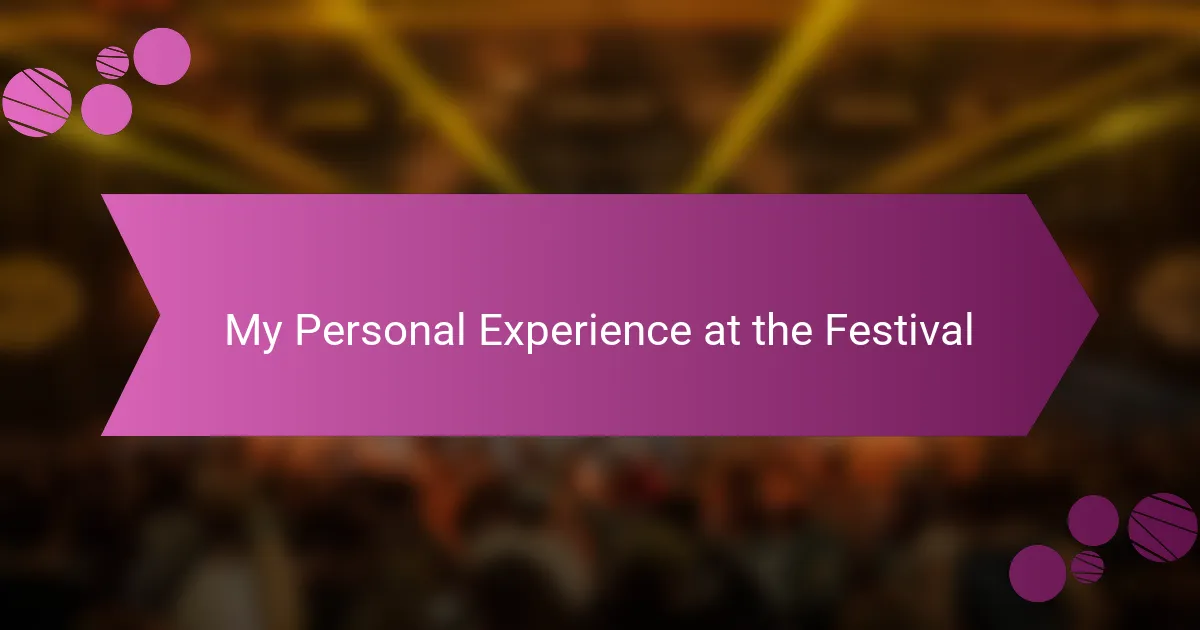
My Personal Experience at the Festival
Attending the Chiang Rai Festival was a transformative experience for me. The vibrant energy of the crowd was infectious, and I found myself dancing along to the rhythms of live traditional music that I had never heard before. One of my favorite moments was when a local artist invited me to join a traditional dance; it was a joyful experience that deepened my appreciation for their culture.
The food was another highlight, with stalls offering delectable local dishes. I distinctly remember savoring a bowl of khao soi, a creamy coconut curry noodle soup. Each bite was not just a taste of the dish but a taste of the culture itself.
Here’s a little comparison to illustrate how this festival stands out among others I’ve attended:
| Festival | Unique Experience |
|---|---|
| Chiang Rai Festival | Rich traditional music and local dance |
| Bangkok Music Festival | Modern pop and international acts |
| Phuket Carnival | Colorful parades and street performers |

Favorite Performances and Artists
One of the standout moments for me at the Chiang Rai Festival was witnessing the awe-inspiring performance by a local hill tribe band. Their blend of traditional instruments and infectious energy created an atmosphere that was both captivating and vibrantly alive. It felt as if the very spirit of the region resonated through their music, drawing everyone into a collective experience of joy and connection.
Another highlight was when I stumbled upon a solo artist playing a soulful rendition of a classic Thai folk song. I remember being completely transfixed, as her voice seemed to weave intricate stories of love and loss, making me reflect on my own life experiences. It was a beautiful reminder of how music can transcend language and culture, bringing people together in a shared emotional journey.
Here are some of my favorite performances and artists from the festival:
- Local Hill Tribe Band: Their energetic and heartwarming performance showcased traditional instruments and storytelling.
- Folk Singer: A solo artist who captivated the audience with powerful lyrics that evoked deep emotions and personal reflections.
- Contemporary Dance Troupe: Their visually stunning fusion of dance and music brought modern interpretations of traditional Thai stories.
- Cultural Exchange Musicians: Groups that represented various regions of Thailand, offering a rich tapestry of sounds and styles.
